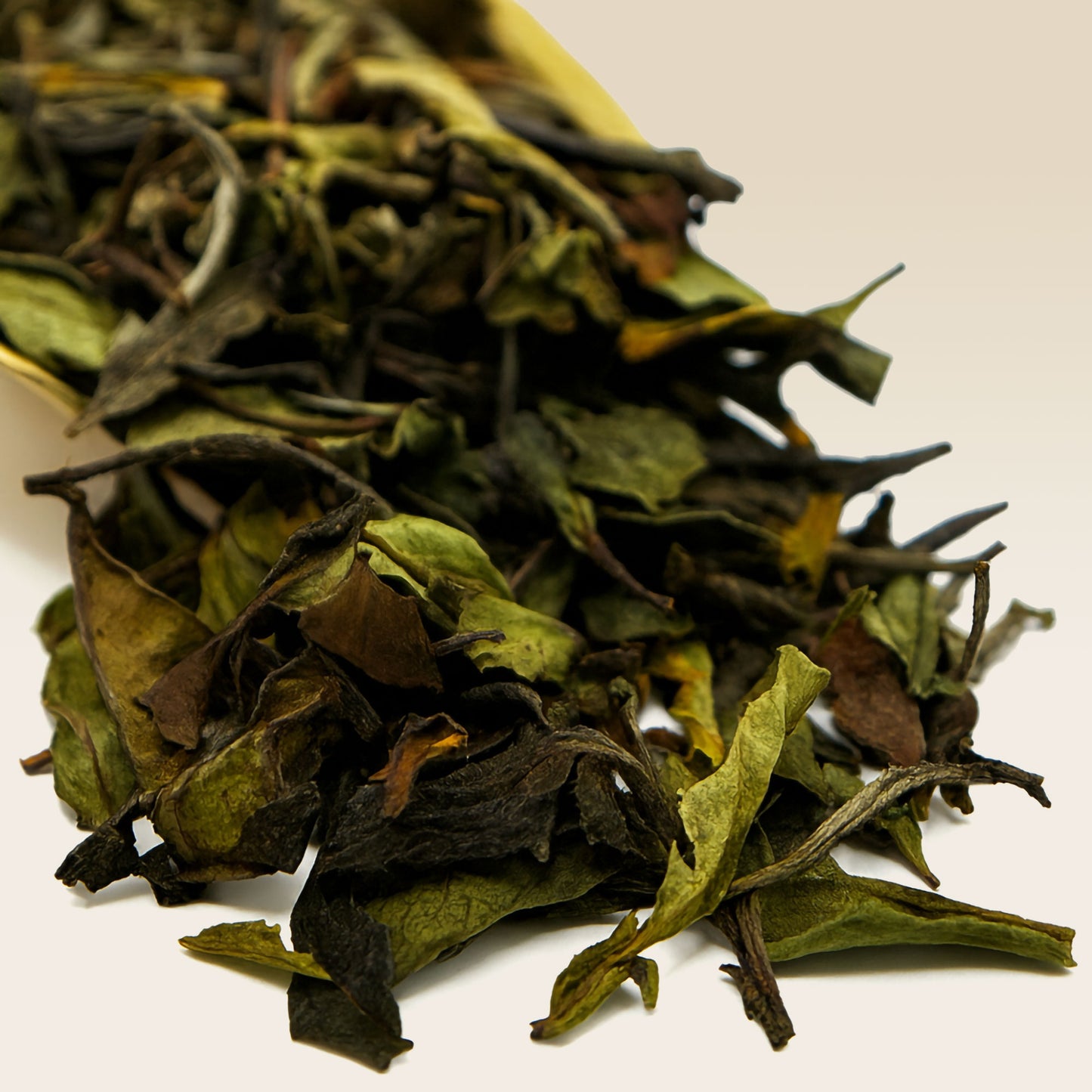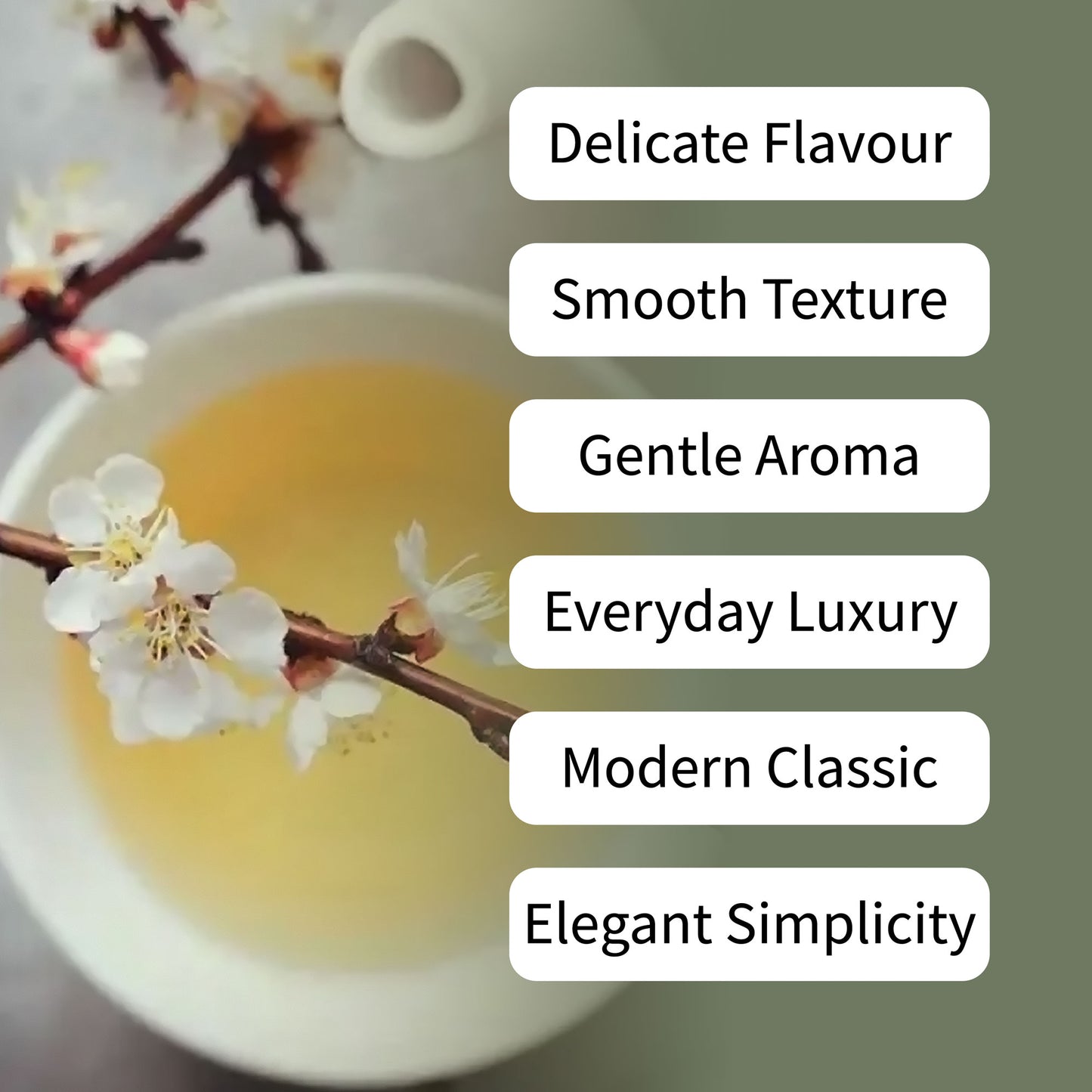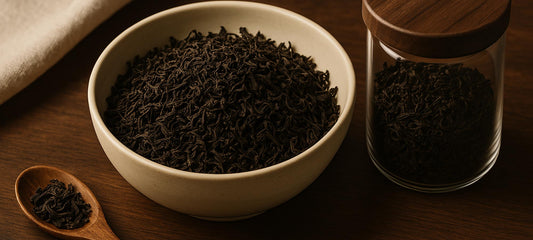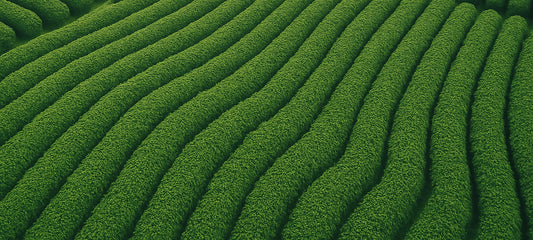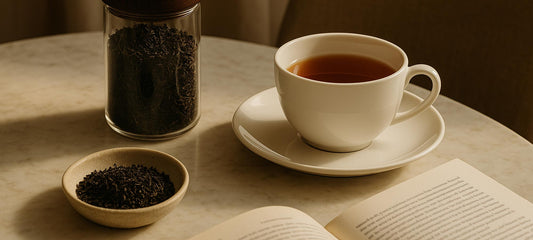How to Brew Loose Leaf Tea Perfectly, Every Time
Estimated read time: 6 minutes.
Brewing tea is not about precision. It’s about presence.
And yet, the way you steep loose leaf tea can reveal or conceal everything it has to offer. The temperature, the time, the space in the vessel—it all matters. Not because rules must be followed, but because the leaf has a story. Your job is to let it speak.
Here’s how to brew loose leaf tea with care, and get it right—every time.
Why Loose Leaf Is Different
Loose leaf tea isn’t confined. It’s not crushed or bagged or pre-measured. It’s alive with oils and shape and memory. But that freedom asks for something in return: room to unfurl, water that honours its temperature, and just enough time—not too much, not too little.
When you get it right, you taste everything.
When you don’t, it hides.
The Essentials You’ll Need
You don’t need a ceremony. Just a few honest tools:
- Loose leaf tea (fresh, whole, well-stored)
- Water (filtered if possible; the tea is 98% water)
- A teapot, infuser, or brewing vessel
- A cup you like to hold
- A timer or sense of time
Optional: a kettle with temperature control, a scale for measuring by weight.
None of these tools are rules. They’re simply ways to listen more closely.
Step 1: Heat the Water
Each tea has its preferred temperature range. Too hot, and you’ll scald it. Too cool, and it stays silent.
| Tea Type | Water Temperature |
|---|---|
| Green Tea | 70–80°C (158–176°F) |
| White Tea | 75–85°C (167–185°F) |
| Oolong Tea | 85–95°C (185–203°F) |
| Black Tea | 90–100°C (194–212°F) |
| Pu-erh Tea | 100°C (212°F) |
If you don’t have a temperature kettle:
- Let boiling water rest for 1–2 minutes for green or white teas
- Use freshly boiled water for black, oolong, and pu-erh
Step 2: Measure the Tea
Start with 1 teaspoon (approx. 2–3g) of tea per 250ml of water. Heavier rolled teas may need more by volume; airy white teas may need less.
But don’t overthink it.
You can adjust over time.
If you have a scale: aim for 2.5g per 250ml as a guide.
Step 3: Let the Leaves Breathe
Use a teapot or infuser that gives the leaves space. Avoid cramped tea balls or shallow baskets. The more the leaf can open, the more it will give.
If the vessel is glass or ceramic, rinse it first with hot water.
This warms the pot and sets the stage.
Step 4: Steep Gently, Time Mindfully
Steep for the right amount of time—not too rushed, not too long.
| Tea Type | Steeping Time |
|---|---|
| Green Tea | 1–2 minutes |
| White Tea | 2–4 minutes |
| Oolong Tea | 2–3 minutes |
| Black Tea | 3–4 minutes |
| Pu-erh Tea | 3–5 minutes (or more) |
Set a timer. Not because the tea demands it—but because it helps you be present.
Taste midway. Trust your senses. If it’s ready, stop.
Step 5: Pour, Sip, Repeat
Strain the leaves, pour into your cup, and breathe in the aroma before the first sip. This moment is half the experience.
If your tea allows for a second infusion (many do), steep again—often slightly longer the second time. Some teas open more with each pour.
Observe what changes.
This is how you learn a tea.
Common Mistakes (and How to Avoid Them)
- Water too hot for green or white teas → Leads to bitterness. Let it cool slightly.
- Too much tea → Overpowers and muddies the flavour. Start light.
- Cramped infuser → Leaves can’t expand fully. Give them room.
- Over-steeping → Extracts tannins and dulls subtle notes. Keep it short, especially with delicate teas.
If your tea tastes flat, sour, or harsh—adjust one thing at a time. Time. Temperature. Quantity.
Brewing is both craft and instinct.
The Ritual Behind the Technique
Brewing loose leaf tea is not about achieving perfection. It’s about inviting clarity.
A clean vessel.
Warm water.
Stillness while the leaves swirl and sink.
It’s three minutes that recalibrate the day.
And the more you do it, the better it gets.


